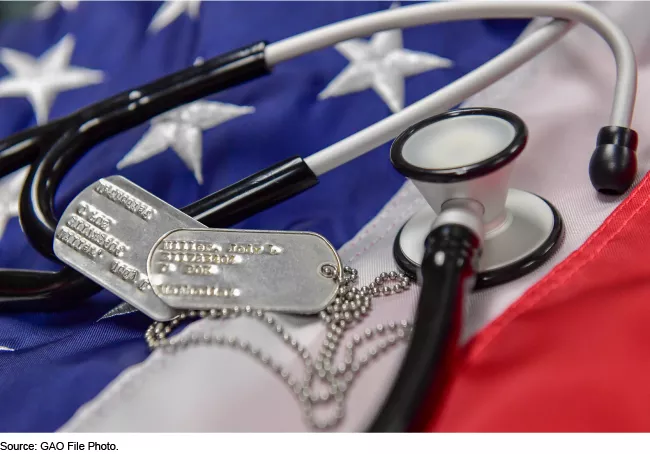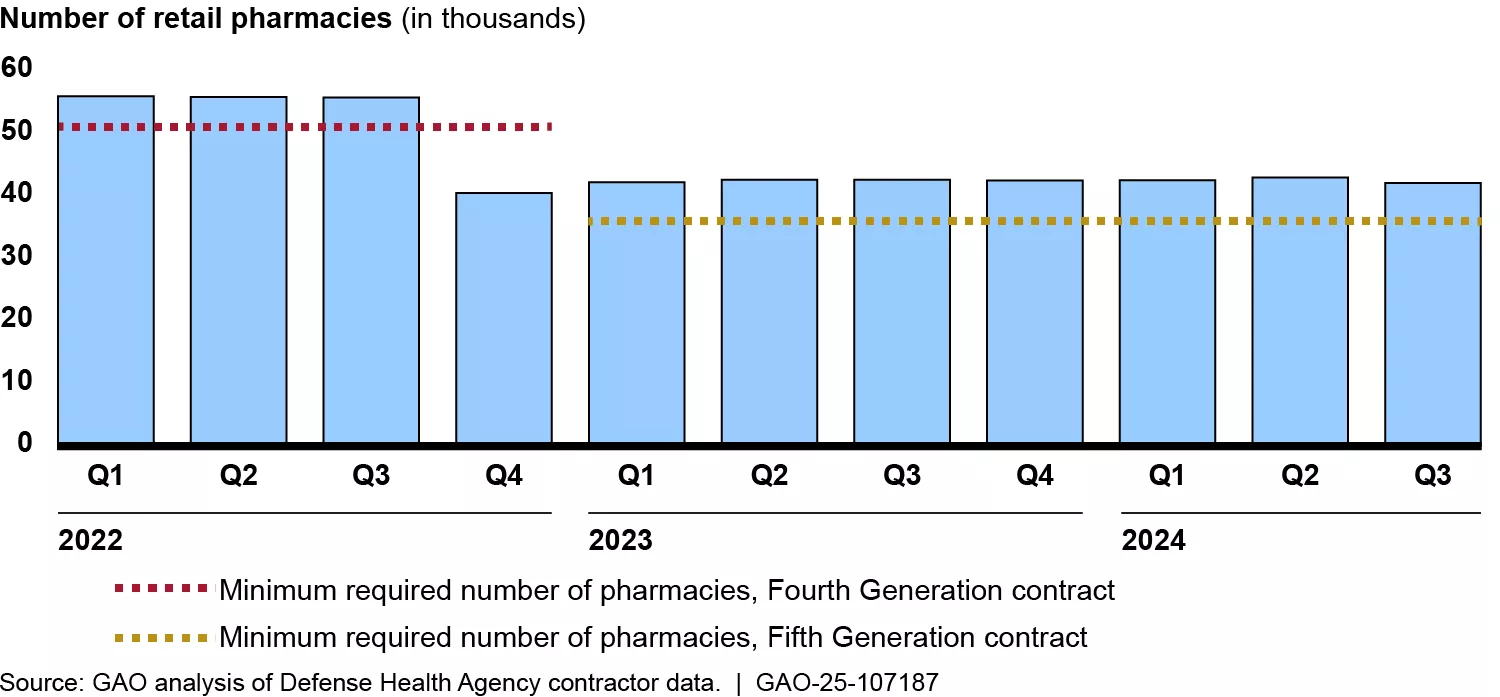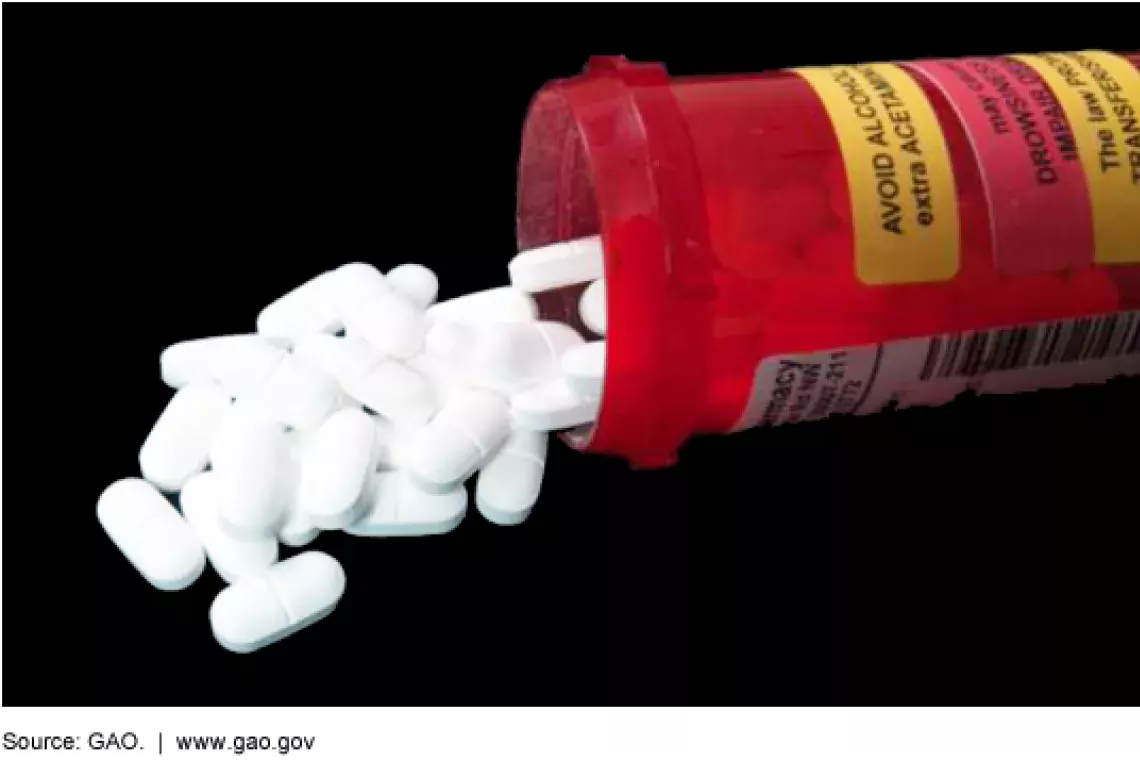TRICARE Changes Could Affect Military Servicemembers’ Access to Pharmacies
Changes to TRICARE could make it more difficult for military servicemembers and their families to access pharmacies and needed medications. The Department of Defense recently made changes to TRICARE—the military’s health insurance program—that reduced the number of pharmacies where prescription orders could be filled.
Today’s WatchBlog post looks at our new report on these changes and their impacts.
Image

What were the changes to TRICARE and how could they impact access?
TRICARE users can have prescriptions filled at military-operated pharmacies, some retail pharmacies, or via mail. Recently, DOD’s Defense Health Agency (DHA) made key changes to retail pharmacy access. The impacts were two-fold: some beneficiaries have had to find a new network pharmacy, and some had to travel farther to reach their nearest pharmacy within the program’s network.
A drop in the number of network pharmacies. DHA reduced the minimum number of retail pharmacies it requires contractors to maintain in the TRICARE network. This minimum dropped from 50,000 to 35,000. As a result, fewer pharmacies are accepting TRICARE. We looked at the impact of this change and found that by reducing the minimum requirement, there are about 13,000 fewer retail pharmacies available to TRICARE beneficiaries. Most pharmacies that left the TRICARE network were independent vs. chain stores. Affected beneficiaries would have to transfer their prescriptions to another pharmacy to continue using the TRICARE benefit.
Average Number of Retail Pharmacies in TRICARE Network by Quarter—January 2021 to September 2024
Image

Drive times up and access to pharmacies down. Changes have also meant that some military servicemembers and their families may have to travel a bit farther to access their medications. Since January 2023, DHA began requiring a certain percentage of beneficiaries have a minimum of one network pharmacy within a 15-minute drive of their home.
Recent DHA data showed that 98% of beneficiaries were within a 15-minute drive of a network pharmacy—meeting the program’s proximity requirement. But for some servicemembers, the new time-based standard could mean they have to travel a bit farther than they’ve had to in the past if their choice pharmacy is no longer in network.
What beneficiaries said about changes. We found that changes to TRICARE have affected pharmacy access for some beneficiaries. For example, we found that about 380,000 beneficiaries may have had to find a new pharmacy when the pharmacy they previously used left the network.
In addition, some beneficiaries we spoke to expressed concern that the changes have limited servicemembers’ choice in pharmacies. But DHA officials said they viewed this more as an inconvenience than a loss of access.
One stakeholder told us that some families of children with rare or complex conditions reported losing pharmacies that were familiar with the specialized care they needed. And they may be struggling to build relationships with new pharmacies.
Monitoring the impact of pharmacy program changes
DHA made changes to the pharmacy benefit with two goals in mind: improving service for beneficiaries and saving money. Specifically, medications would be more competitively priced for servicemembers and their families. And a smaller network of pharmacies would be more efficient—cutting costs for DOD and beneficiaries.
But how is DHA monitoring if its changes are yielding these outcomes? And how is it tracking impacts on beneficiaries? We looked at these efforts and found that while DHA monitors certain aspects of beneficiary access to pharmacy services, it could do more.
For example, DHA is not verifying data provided by its contractor—which is needed to monitor beneficiaries’ access to pharmacies—even though DHA’s oversight plans call for doing so. Periodically auditing contractor data could help DHA ensure it has the most reliable information available as it makes decisions for the TRICARE pharmacy program and the beneficiaries served.
For more on our recommendations, be sure to check out the report.
- GAO’s fact-based, nonpartisan information helps Congress and federal agencies improve government. The WatchBlog lets us contextualize GAO’s work a little more for the public. Check out more of our posts at GAO.gov/blog.
- Got a comment, question? Email us at blog@gao.gov.
GAO Contacts
Related Products

GAO's mission is to provide Congress with fact-based, nonpartisan information that can help improve federal government performance and ensure accountability for the benefit of the American people. GAO launched its WatchBlog in January, 2014, as part of its continuing effort to reach its audiences—Congress and the American people—where they are currently looking for information.
The blog format allows GAO to provide a little more context about its work than it can offer on its other social media platforms. Posts will tie GAO work to current events and the news; show how GAO’s work is affecting agencies or legislation; highlight reports, testimonies, and issue areas where GAO does work; and provide information about GAO itself, among other things.
Please send any feedback on GAO's WatchBlog to blog@gao.gov.




